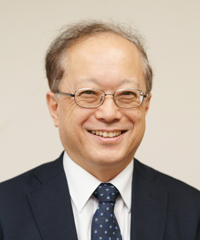A well-known late developmental psychologist in Japan is known to have written that the symptoms of attention deficit hyperactivity disorder (ADHD) are simply behavior associated with being a child and thus not subject to treatment.
My position has been that this childlike behavior (restlessness, constant movement) can interfere with participation in group activities and learning at school, and then when it has a negative effect on the child's relationships and learning, treatment is necessary. Furthermore, it is known that children with behavioral signs of ADHD are subject to reprimand and criticism from others or ostracism, which can then lead to secondary disorders such as anxiety disorder and depression. As such, my view that treatment is necessary remains unchanged.
Nevertheless, when the instinctive behavior of children to follow their feelings and freely explore the world around them is repressed on the pretext of education and acquiring social skills, the conditions of that society itself should be called into question.
I have encountered two picture books that aroused these strong feelings in me. Both appear to be children's books, but after reading them, it was clear that they had strong messages for adults.
One book is the "Chuui Dokuhon [Attention Handbook]" by Tarō Gomi, a well-known writer of illustrated books for children. With heartwarming images that are his hallmark, Gomi humorously depicts what children need to pay attention to and be careful about every day. The book starts with daily behavior in the morning: "Don't oversleep." It continues with: "Pay attention to your daily schedule," "Pay attention to what to wear," "Be careful not to forget anything," "Listen to your mother," "Be careful not to be late," "Pay attention to your classmates," "Pay attention to your teacher," "Pay attention to the majority," "Pay attention on the way home," "Be careful when answering 'How was your day today?' etc. Then, in the evening, it advises children to "Pay attention to your homework," "Make sure to prepare for tomorrow," "Think about what bothered you today," and "Make sure to feed the goldfish," and ends with "Be careful not to be too careful." The author gives each piece of advice with a sense of humor. For example, when he says "Pay attention to your homework," his advice to children includes a gentle and ironic tone when he tells them "do it for the teacher who is telling you to do it for yourself." When he tells them "Be ready for tomorrow," and "Pay attention to making tomorrow a valuable day," his advice ironically signals how watchful these free and energetic preschoolers must be once they enter society. Play is fundamental to children's behavior and a central activity in daycare and kindergarten, and we sense the author's sharp criticism that children, who were once carefree, now have to be careful about so many things once they start attending school.
The other picture book is Constance and the Great Escape by Pierre Le Gall, which has been translated from French into Japanese. The story involves a mischievous tomboy named Constance whose parents send her to a strict boarding school to learn good manners and proper behavior. Because of the strict rules and punishment there, even the one well-known notoriously delinquent girl in the neighborhood who has been there longer than Constance is dispirited and has now completely changed into a good child. At first, Constance resists and continues to break the rules and the teachers become even stricter. Constance then comes to realize that she doesn't belong there. Taking advantage of the fact that only children with bad behavior are kept here, she deliberately transforms into a model student who willingly follows the rules of the boarding school. The principal is surprised by her proper conduct and calls her parents to tell them "Constance is not someone who should be attending this school." As she had planned, Constance leaves the boarding school to return home and the story ends with Constance beginning her mischievous conduct once again and congratulates her on carefree mischief.
These two books completely differ in their way of expression, but they both take a warm view of the children who are required to follow strict rules in daily social life.
Gomi encourages children, who must be careful about so many things, to become aware of their feelings and behavior. And Le Gall cheers Constance as a mischievous tomboy who defies adults and thereby criticizes the constrained world of grown-ups.
Reading these children's books, I was a bit shaken and began to wonder about my stance that justifies "treatment" to change children's behavior so that they are not harmed by the pressure of adult society that seeks to repress their inherent childlike nature.
I think that if we only had people like Tarō Gomi and Pierre Le Gall in the world, the treatment that I provide would become unnecessary.
References:
- Le Gall, Pierre. Konsutansu, kishuku gakko e iku [Constance and the Great Escape]. Illustrated by Éric Hélio. Translated by Misao Fushimi, Kodansha, 2009.
- Gomi, Tarō. Chuui Dokuhon [Attention Handbook]. Bronze Publishing Inc., 2002.



 Yoichi Sakakihara
Yoichi Sakakihara










